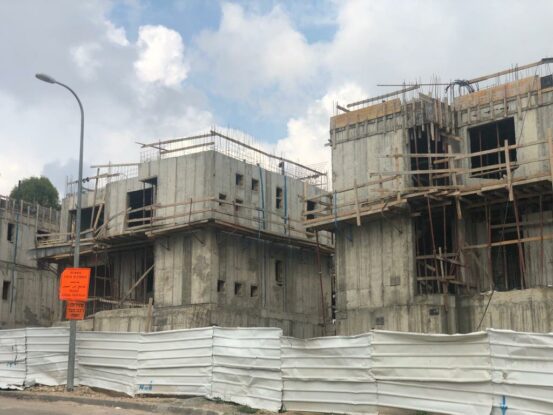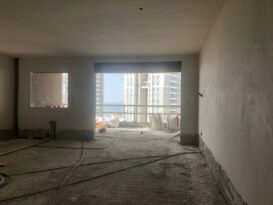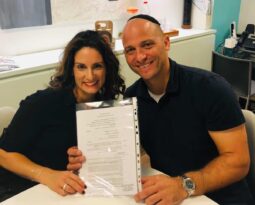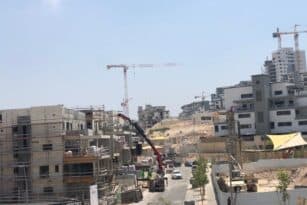Investing in new development in Israel has proven to be very lucrative over the past several decades. It is not uncommon to hear stories of fortunate buyers who purchased a property in Israel in its pre-construction phase only to see their investment double or even triple in value. This exponential growth is well documented and spans most of Israel’s major cities today. However, when buying “off-plan” it is important to be aware of the unknown costs that are involved in the purchase, in particular the linkage to an index that could significantly impact the actual price.
The strength of the Israel real estate market is one of the main reasons that the average Israeli family has seen a significant increase in the equity of their homes. Since 2008, the value of property in Israel has increased at an average rate of 10% per year making homes worth significantly more than they were purchased for. Today, even with record-high prices, the streets of newly developed neighborhoods, and sales offices of the new construction projects lining them, are full of potential purchasers looking to invest in the next hotspot in Israel.
However, there is one increasingly important, but sometimes overlooked factor, that should be considered before jumping into an investment in a new development in Israel. It may seem absurd, but the fact is that a buyer doesn’t know the true purchase price of the property they are buying until the final payment is made, which could be years down the road. The purchase price in a new development in Israel is structured so that there is a base agreed price that is linked to the cost of building, the building cost index, published monthly by Israel’s Central Bureau of Statistics. From the point in time that the contract is signed, the balance owed to the developer increases along with the index, with no cap in place. I call this linkage “the silent killer,” because it has the potential to kill the viability of an investment. Yet somehow, it often flies under the radar.
Here’s an example: On January 1st, 2021, Buyer X purchases an apartment in a yet-to-be-built development for 1,000,000 shekels. He pays 20% at signing, leaving a balance of 800,000 shekels owed to the developer to be paid when the property is complete. This balance is linked to the cost of the building index.
On January 1st, 2022, a year has gone by, and no further payments have been made. The linkage for 2021 is 5.6%. The balance owed is now 800,000 ILS x 1.056% (+ VAT on the linkage) = 852,160 shekels.
On a project that can take three or four years to build, the linkage cost can add up quickly especially if the global trends of price increases, expected interest rate hikes, and worrisome inflation concerns continue. The cost of construction in Israel may stay high for the near future, making linkage costs a key factor to consider. It is therefore prudent to take this into consideration when planning a purchase.
The following are suggested proactive steps that can be taken to minimize the exposure a buyer has to these linkage costs when purchasing new construction in Israel. While they each have their pros and cons, they can be useful in the right circumstances:
- Negotiate a cap on the cost of linkage with the developer as part of the commercial negotiation ( say no more than 4% per year), so there is a “worst-case scenario” one can use to calculate the expected overall cost of the property.
- Pay a higher amount of the price earlier in the process, minimizing the balance owed to the developer, and thus limiting the amount subject to linkage. However, this means that the buyer parts with his money earlier/for longer, which means his money is no longer “working” for him or gaining any interest.
- Take a mortgage loan early in the process. By paying the developer with mortgage funds, the buyer gets to keep more of his equity in his pocket for longer and pay a known percentage of interest on the mortgage (fixed rates in Israel range from ~2.5%- 3.5% depending on loan term/currency/other factors). This is the most common and often effective way to limit linkage costs (and not pay the lion’s share of the equity in the early stages of construction). By doing this, the buyer avoids exposure to the unknown variable of building linkage. When choosing between interest and linkage, it’s a matter of “pick your poison.” But with the interest expense known and the linkage costs constantly changing, some prefer the “devil” they know.
Fortunately, not all hope is lost. Buying new construction in Israel could still yield an excellent result, even after linkage payments have been paid. The sales offices for new developments are hustling and bustling right now with local and foreign buyers wanting to get their “foot in the door” and finalize the price for a home that will only be built years down the line. But while it could well end up being “the deal of their lifetime,” it’s always wise to consider and prepare for the “silent killer” in order to maximize one’s investment and minimize the risk involved.

Dani is a senior mortgage broker at First Israel Mortgages, where he has successfully executed an efficient and smooth approval and loan funding process on behalf of hundreds of clients in Israel and abroad. Dani can be reached at [email protected], on his Israeli cell +972-54-332-5370 or direct US cell +1-917-675-5605.







